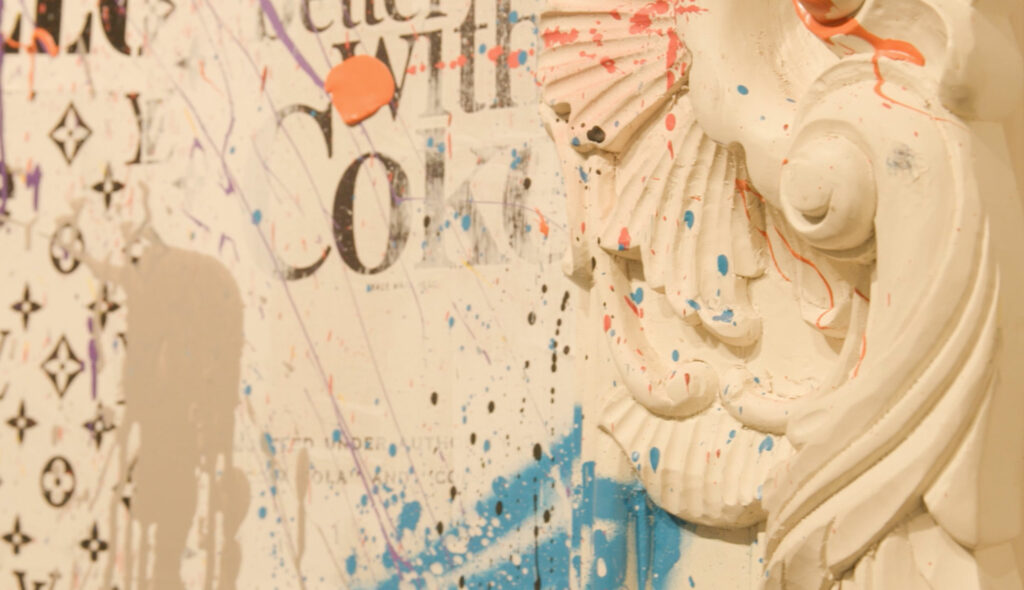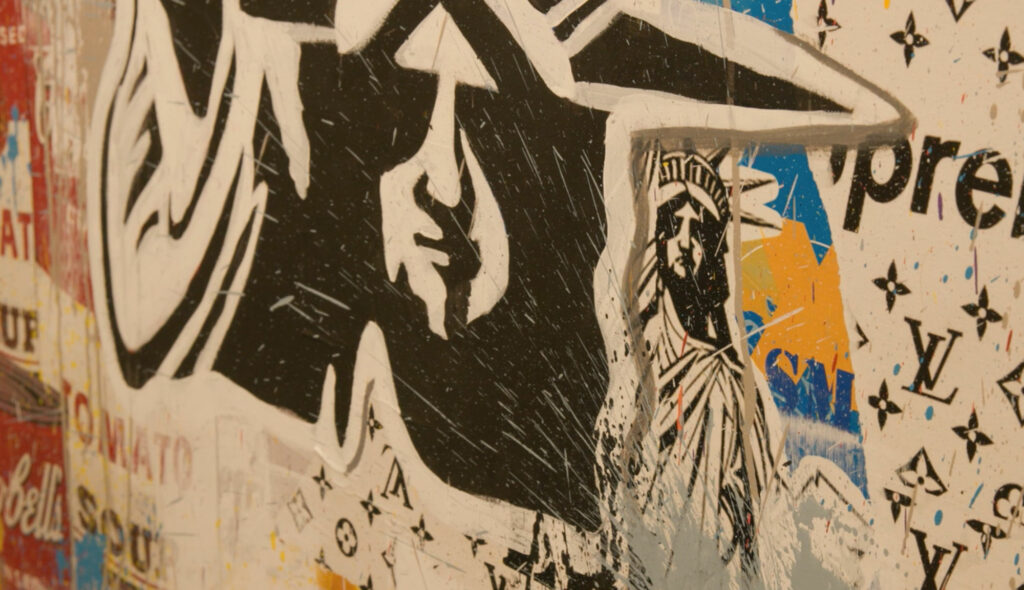Interview: Sellout
We're here with Sellout. This is one of his pieces. So Sellout, you're a street artist, you've been in the game for about 10 years, how do you really differentiate your work? What made your work really unique to what your message is and what you're bringing out?

Well, let's talk about both coasts. You have elements—you've got LA, you've got New York, literally juxtaposed with each other. We've got elements of Warhol, we've got Marvel, what combined these other sides of the US?
Yeah, right, right, right. I think one of the major parts in the work I’ve produced is that there’s a little bit of me in every part of the work, whether it’s being influenced by maybe certain parts of Warhol’s upbringings, seeing some of that I want to put it into my work. But I’m influenced by the streets, the textures of the streets, seeing the drips, the runs of the paper building up, and so it means a lot to me to represent kind of where I came from, which would be the streets. You can’t always tell that when you look at a canvas, so it’s always been kind of important to me to bring about those textures that essentially represent the streets. And then when you’re talking about the images, the images are a lot about what resonate with me—like I said, as an artist but also what resonates to the world on a whole. I think you see a lot of iconic images that feel at home to some people and that really brings a piece when you can feel like I connect to something. And so a lot of times I look at what I connect with, how others will connect with it, and that’s kind of the love language that I at least start with.
Awesome. As a street artist, when you make your piece, is there any specific messaging? Because I know you're talking about how people relate to it, but is there anything that you really want people to hear or to see when they look at Sellout?
I love that, because it's like how are you doing this. Love that, love that, cool man. Anything else you want to share?
Yeah, perfect. I think what really is driving this home and something that really we believe in is killing the idea of the starving artist. You can make it through. You can inspire. Other people are there to trail behind you and the efforts that you've made being in this big ass convention in Los Angeles and being up in a major gallery and showing.



